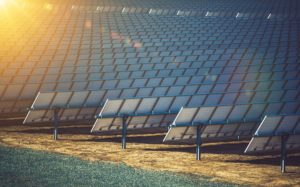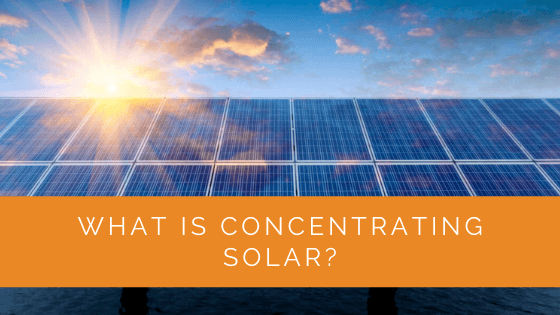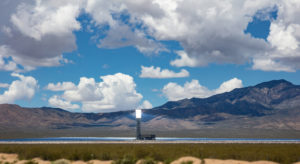Concentrating Solar Power (CSP) technology marks a significant leap in our quest for sustainable and renewable energy sources. This innovative approach harnesses the sun’s abundant energy more efficiently than ever. But what exactly is Concentrating Solar, and how does it revolutionize how we generate electricity? This article delves into the fascinating world of CSP, offering a comprehensive overview of its workings, history, types, benefits, challenges, and future potential in reshaping our energy landscape.
As we navigate through the complexities of this technology, we explore how CSP uses mirrors to concentrate solar energy, transforming it into high-temperature heat. This heat, in turn, drives turbines or engines for electricity production. From its historical roots to modern implementations in large-scale utility projects and industrial applications, CSP technology is a testament to human ingenuity in harnessing natural resources. Focusing on its operational mechanics, types of CSP technologies, and their respective benefits and drawbacks, this article provides an in-depth understanding of a technology poised to play a pivotal role in our sustainable energy future.
Contents
- 1 Key Takeaways
- 2 How does Solar Concentrating Work?
- 3 How did the CSP Technology Originate?
- 4 Key Elements Needed for CSP Technologies
- 5 Types of CSP Technology
- 6 Benefits of Concentrated Solar Power
- 7 What is Thermal Storage in CSP Technologies?
- 8 What are the Problems Associated with the Concentrate Sunlight Technology?
- 9 Future of Concentrating Solar Power CSP
- 10 Case Study: Implementing Concentrating Solar Power (CSP) in a Residential Setting
- 11 Expert Insights From Our Solar Panel Installers About Concentrating Solar Power (CSP)
- 12 Experience Solar Excellence with Us!
- 13 Final Thoughts
Key Takeaways
- Concentrating Solar Power (CSP) is a renewable energy technology that uses mirrors to focus sunlight onto a receiver, which generates heat energy to produce electricity. Spain and the United States are leaders in CSP capacity.
- CSP technology dates back to ancient times but was first used for electricity generation in 1866. Over the years, it has evolved and become more efficient, with different CSP systems like parabolic troughs and power towers.
- CSP offers benefits like clean energy generation, efficiency, reliability, and energy storage capabilities. However, it also faces challenges such as high initial costs and location dependence. The future of CSP looks promising, with potential to cover a significant portion of global energy needs by 2050 and applications in space-based solar power.
How does Solar Concentrating Work?
In solar power CSP, mirrors are implemented to focus sunlight or concentrate the sun’s light energy into a receiver. Natural solar energy and heat energy get reflected and concentrated in one area and sent through a power system. This way, you have a renewable energy source for electricity generation.
The solar energy captured heats up the high-temperature fluid in the receiver. As a result, the concentrated light is then converted into heat energy and used to create steam. Further, the steam is then used to turn the turbine to generate electricity.
The thermal energy generated can be used both for spinning a turbine and powering an engine. This concentrating solar power is typically used in utility-scale projects and for industrial purposes. These may include food processing, chemical production, mineral processing, and more.
How did the CSP Technology Originate?
The concept of the CSP technology dates back to the 214-212 BS by Archimedes. However, the actual usage for producing electricity was in 1866. August Mouchout made use of the parabolic trough systems to operate the first solar steam engine.
By 1912, the first-ever trough system got developed in Egypt, and following this, Italy created the first model of the CSP plant. By the year 2006, the linear fresnel systems were designed as the significant commercial solar power plant.
Over the years, successful parabolic trough systems and commercial power plants like Ivanpah Solar Power Plant proved the efficiency of the CSP technology.

Key Elements Needed for CSP Technologies
So, can these CSP plants be implemented in any location? What are the requirements for the successful execution of concentrated solar power systems?
- Financing: Financing for concentrated solar power plants is not cost-expensive. Implementing the CSP technologies and systems require hefty money and resources and are an essential part of its seamless implementation.
- Very High Temperatures: Before implementing the CSP solar power plants, the sun’s energy and direct average intensity must be strong in any region. The sun’s light energy needs to be intense to capture the concentrated sunlight. Thus with higher DNI, you can attain the maximum solar radiation required to generate electricity.
- Water sources: It is vital to have nearby water sources for the smooth running of the CSP plants. Water is needed for cooling and keeping the mirror surfaces clean.
- Minimal Cloud Coverage: Concentrated solar power to efficiently generate electricity requires a limited cloud coverage area. For the accommodation of typical CSP plants, it requires at least 5-10 acres of land. The thermal energy storage is better accommodated in larger spaces.
- Easy Accessibility: A CSP plant should be situated on land, which is helpful for power generation with easy access to a transmission grid. With easy access to high voltage transmission lines, it would be faster and easier to generate power through the captured sunlight.
Types of CSP Technology
So in what way do the CSP technologies operate today? Starting with the trough, we now even have tower systems for thermal energy storage.
- Parabolic Dish System
- Parabolic Trough Systems
- Linear Fresnel Reflector Systems
- Power Tower Systems
Parabolic Dish Systems
In a parabolic dish system, the mirror is present in the shape of a U and helps to focus sunlight on the receiver. Unlike other CSP technologies, parabolic dish systems use liquid gas like helium and hydrogen to drive the engine or turbine.
Once the concentrated sunlight gets collected in the receive, it will heat the gas in the tubes at very high temperatures. The engine, receiver, and generator form a combined force for focused sunlight and generating electricity in a dish system.
Parabolic Trough System
In a parabolic trough system, the curved u-shaped mirrors focus sunlight into a receiver tube at the focal point. Usually, these receiver tubes and pipes are filled with oil and fluid.
Once the mirrors are pointed towards the sun, the high-temperature heat transfer fluid absorbs the sun’s energy and heats the water at a temperature of 750 degrees. The heat transfer fluid produces steam which assists in turning the turbines and engines to produce electricity.
Linear Fresnel Reflector Systems
Though they follow the principles of trough systems, a linear reflector has a series of solar collectors arranged in parallel rows. This north-south arrangement is generally made to capture the maximum concentrating solar power at all times.
The mirrors are placed flat on the ground and help focus the sunlight towards the receivers placed at a higher level. Like a trough, the pipes contain water heated by the captured sunlight that can produce steam and later produce electricity.
Power Towers
Power tower systems, also known as central receivers, implement an array of flat, computer systems operated mirrors. These heliostats capture the solar energy and focus the sunlight upon the receiver.
In this system, the receiver is placed on top of a tower. It collects the solar energy that heats the fluid inside at a high-temperature rate. The heated fluid can either be used for power generation or can even be stored for future needs.
Benefits of Concentrated Solar Power
Concentrating solar power CSP depends on solar energy, a renewable energy source, to generate electricity. It suggests that this solar power system runs on a clean energy source and reduces the overall carbon footprint.
So what are the significant advantages of installing CSP technologies?
- Conservation of Energy: Using solar energy naturally reduces the dependency on non-renewable energy sources like coal, oil, gas. Hence, with the availability of solar fuels and unlimited sunlight, tons of energy is saved for future use.
- Carbon-Free: Carbon emissions can be gravely reduced with the use of these solar power systems.
- Highly Efficient: CSP technologies are highly reliable and efficient when it comes to electricity generation.
- Reliable Power: Solar CSP plants and systems have an expiry of more than 20 years. So once installed, these solar energy systems can go a long way and provide electrical power for many years to come.
- Renewable Energy Source: Since these solar power systems depend on solar energy for power generation, they have no adverse effects on the environment. As a result, there is no pollution and CO2 emission.
- Energy Storage: CSP plants have excellent energy storage capability and can store them in batteries. This stored power can later get used for fulfilling the energy demands during cloudy days.
Even though CSP technologies have an excellent potential for producing electric power at a high-efficiency rate, there are still a few downsides to these concentrating solar power systems:
- The upfront expense of installing and constructing the solar power plant and thermal storage is quite expensive.
- Generation of low energy density
- Needs larger spaces for installing the solar systems
- The manufacturing and installation processes may create pollution, like dust
- Largely dependent on location
- Installing manufacturing plants and a solar steam engine can affect mother nature in the form of deforestation.

What is Thermal Storage in CSP Technologies?
Most of the time, a solar energy system faces multiple challenges in producing electrical power due to unstable weather conditions. Due to lack of sunlight and rains, the efficiency of the solar system gets significantly affected.
However, with thermal energy storage, this challenge can get chalked out easily. In CSP technology, the sunlight gets reflected onto a receiver which later creates electricity through steam. Now, this electrical power can be stored or immediately used with thermal storage.
This methodology will help the concentrated solar power system to offer a renewable, clean, and never-ending supply of electricity.
So, what types of energy storage work in the storage of electrical power in CSP technology?
Two-Tank System
The fluid collected is stored in two different tanks, one at a higher temperature and a lower. The liquid from the lower temperature tanks then flows to the solar collector, where the solar power energy heats it at a high-temperature range.
Following this, it then flows to the high-temperature tank, where it gets stored. From here, the fluid is then passed on to a heat exchanger to produce steam for electricity production. Further, the fluid then exits the heat exchanger and then passes on to the lower temp tank.
This storage system has been tried and tested in the parabolic trough systems and has been successful in the US.
Two-Tank Indirect Storage System
Though similar to the two-tank system, the fluid used for heat transfer and storage is different. The two-tank indirect system is used in CSP plants where the heat transfer is too costly.
Here, the storage fluid from the high-temperature tanks is used to create steam in the same way as the two-tank system. They even require an additional heat exchanger, which adds to the expense of the indirect approach.
What are the Problems Associated with the Concentrate Sunlight Technology?
The CSP stations at present are facing high manufacturing and production costs. Though there is room for better efficiency and improvement in CSP technology, there still seem to be gaps that need to be addressed.
- Uneven energy distribution, especially in the Linear Fresnal systems, can affect the production of steam and later electricity.
- Radiant heat loss in different CSP systems like trough and linear.
- It has a limited heat transfer medium. The ones that have been approved are salt, oil, and water. However, carbon dioxide is in talk of being used as the new medium.
Future of Concentrating Solar Power CSP
According to studies and researches by International associations, CSP technologies have exceptional potential in the future. As per the findings, concentrated solar power could cover 25% of the world’s energy needs by 2050.
Due to advancements in technology and significant breakthroughs, the accessibility of CSP technologies will improve in the years to come. With the greater flow of investments, this renewable energy source will continue to rise.
Currently, Spain is the frontrunner in the department of CSP technologies and has around 50 approved projects in the pipeline. Since these systems and technologies operate best in the regions with higher solar radiation, CSP plants are expected to grow in nations like Mexico, the US, Africa, and more.
Apart from producing electricity, CSP has found its usage in solar thermal reactors that can be used for creating solar fuels. Also, research and efforts are being taken to formulate a space-based solar power.
In the SBSP method, the solar energy is captured in outer space, then transferred to the earth for electrical power. However, the main challenge of conducting more experiments and installing these space-based systems is the high cost.
With SBSP, it is possible to acquire a constant and never-ending supply of clean and reliable energy sources. However, it may take many more years for the successful deployment of these systems into space.
Case Study: Implementing Concentrating Solar Power (CSP) in a Residential Setting
Background
At Solar Panels Network USA, we are committed to providing cutting-edge solar solutions tailored to meet diverse energy needs. Our latest project involved implementing a residential Concentrating Solar Power (CSP) system, demonstrating the viability and benefits of this advanced technology in a home setting.
Project Overview
The goal was to install a CSP system capable of efficiently generating electricity for a single-family home. The project aimed to showcase CSP’s potential in residential applications, leveraging its high efficiency and reliability to meet the household’s energy demands.
Implementation
We began with a detailed assessment of the property, focusing on the available space and sunlight exposure. Given the residential context, we opted for a compact parabolic trough system, which would fit well within the available space while providing the required energy output.
The CSP system included the following key components:
- Parabolic Trough Mirrors: These mirrors focus sunlight onto a receiver tube containing a high-temperature heat transfer fluid.
- Receiver Tube: Filled with a heat transfer fluid, the tube absorbs concentrated solar energy, heating the fluid to high temperatures.
- Heat Exchanger: The heated fluid transfers its thermal energy to water, producing steam.
- Steam Turbine: The steam drives a turbine connected to an electricity generator, converting thermal energy into electrical energy.
- Energy Storage: A thermal energy storage system was integrated to store excess heat, ensuring a continuous power supply even during cloudy periods.
Results
The CSP system successfully provided a significant portion of the household’s electricity needs. During peak sunlight hours, the system generated enough power to meet all the household’s demands. The thermal energy storage enabled continuous power supply during non-sunny periods, enhancing energy reliability.
The installation demonstrated several benefits:
- High Efficiency: The system efficiently converted solar energy into electricity, reducing reliance on the grid.
- Reliability: The integrated thermal storage ensured consistent power availability, even during cloudy days or at night.
- Environmental Impact: The system’s use of renewable solar energy significantly reduced the household’s carbon footprint.
Summary
Our project showcased the practical application of CSP technology in a residential setting. By leveraging parabolic troughs and thermal energy storage, we provided a reliable and efficient energy solution. At Solar Panels Network USA, we continue to push the boundaries of solar technology, delivering innovative and sustainable energy solutions to our clients.
Expert Insights From Our Solar Panel Installers About Concentrating Solar Power (CSP)
As a seasoned installer, I can affirm that CSP technology represents a significant leap in harnessing solar energy. Its ability to generate high-temperature heat and drive turbines makes it an efficient and reliable renewable energy source.
Senior Solar Installer
Understanding the different types of CSP systems is crucial. Parabolic troughs and power towers each have unique advantages that can be leveraged based on the specific needs of a project, whether it’s for utility-scale applications or industrial processes.
Lead Installation Technician
The integration of CSP technology with energy storage solutions is a game-changer. It not only ensures a steady power supply but also enhances the overall efficiency and reliability of solar power plants.
Solar Energy Consultant
Experience Solar Excellence with Us!
Trust in Solar Panels Network USA, where our seasoned experts deliver top-quality solar solutions for homes and businesses nationwide. With a legacy of countless successful installations and a commitment to sustainable energy, we’re your reliable partner in the solar journey. Ready for a brighter, eco-friendly future? Call us now at (855) 427-0058 and harness the power of the sun!
Final Thoughts
CSP plants have the capability of producing enough electricity to power up to 70,000+ houses today. The US Energy Department is proposing to diminish the manufacturing and installation costs of these solar power systems.
Once CSP technologies are made affordable, more nations would come forward to accept this energy-efficient technology as their source of power over fossil fuels.
About the Author
Solar Panels Network USA stands at the forefront of solar energy solutions, driven by a team of seasoned solar engineers and energy consultants. With over decades of experience in delivering high-quality solar installations and maintenance, we are committed to promoting sustainable energy through customer-centric, tailored solutions. Our articles reflect this commitment, crafted collaboratively by experts to provide accurate, up-to-date insights into solar technology, ensuring our readers are well-informed and empowered in their solar energy decisions.


